An image sequence stores individual video clips as still pictures with incrementing numbers in file names. By converting video to image sequence, you can pick out the moment when a moving subject is in the perfect pose or position from them or create stop motion effects and time-lapse look in post editing.
Burst and time-lapse modes can help you capture images in sequence. But what if you've recorded it into a video? Converting the video to an image sequence is also a good way out. And that's exactly what we are going to discuss today. Keep reading and find the best video to image converter for you.
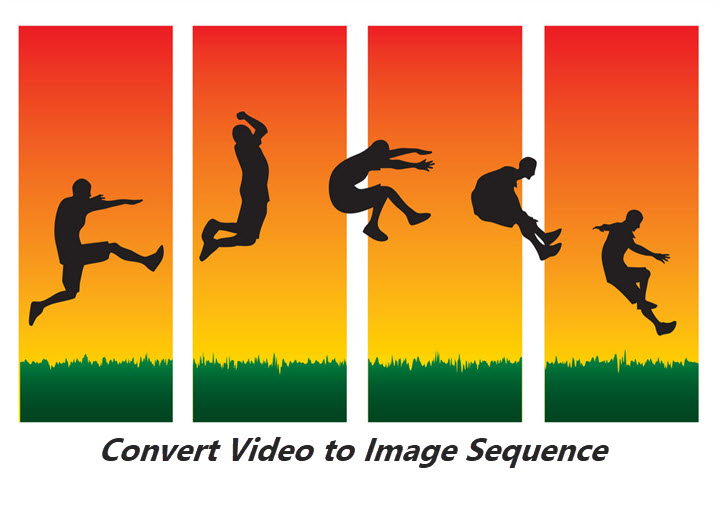
How we made this guide?
We started with people's requirements for converting video to image sequence, incl. output quality, format, processing speed, and OS. Then, we tested various tools and selected the best options accordingly. The instructions for each tool were written and reviewed by our experienced tech writers. With our clear steps and authentic screenshots, you can convert your video to frames successfully and with confidence.
1. Convert Video to Image Sequence in VideoProc Converter AI
VideoProc Converter AI, the best video to image converter for everyone, has a quick and simple workflow to finish the conversion at your fingertips. With 370+ formats and codecs in its arsenal, it can convert a broad range of videos to JPG and PNG, to name a few, MP4, AVI, MKV, FLV, MOV and WebM with transparency channel, HEVC, VP9/8, AV1, VR, 3D, , 360-degree videos, etc. In addition to formats, it gives you the full right to customize images amounts and dimensions.
Besides, its AI Super Resolution tool can upsale images and videos by 200%, 300%, and 400% with realistic texture, benefiting post-editing, sharing, and archiving in one stop.
Now download it to your Mac or Windows and convert video to image sequence in a snap! Hot!
Step 1. Launch VideoProc Converter AI on your PC. Click "Video Converter" on the main interface, then import a video to it.
Step 2. Click "Toolbox" and choose the "Snapshot" option in it.
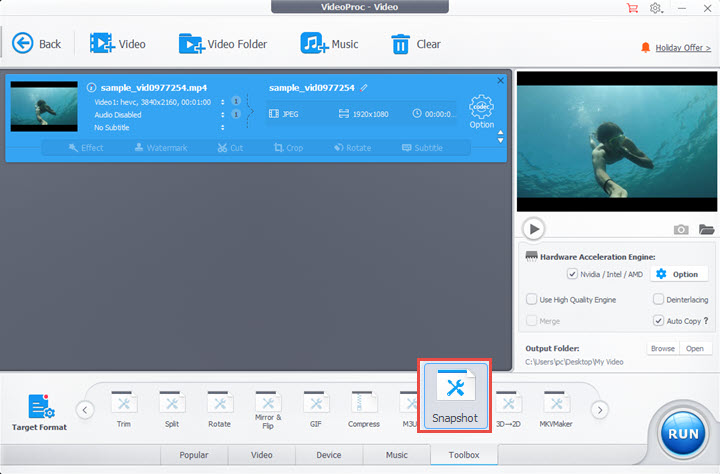
Step 3. Double-click on Snapshot to open a sub-window. Drag the green knobs to set the duration of the clip that you want to turn to pictures. And choose an output format (PNG or JPG), keep original image size, and check "Export All Frames". This is going to extract frames from the video without missing any movement in the footage.
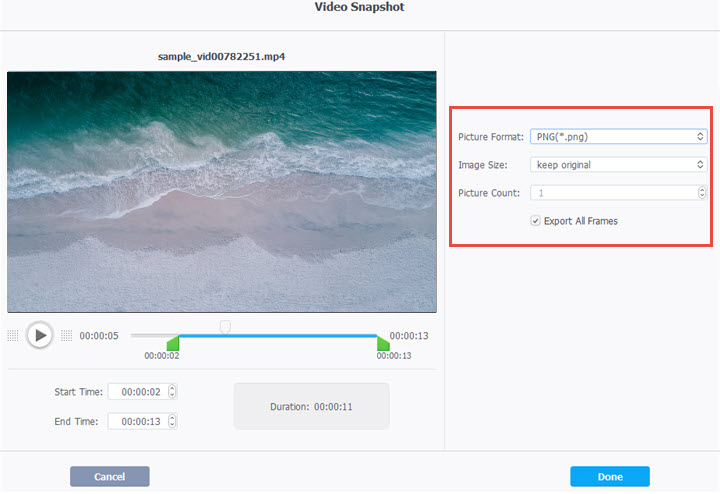
Note: If you want specific number of the exported frames, cancel "Export All Frames" and just input the number in the picture count option. It determines the frequency of snapshots capturing in VideoProc Converter AI. For example, if you ask it to convert a 10-second video to 20 images in sequence, it'll capture one image per 0.5 (10/20) seconds.
Step 4. Pay attention to "Output Folder" that indicates the storage path of pictures from your video. Also, you can browse to select another folder to save them. Finally, hit the "RUN" button to start converting the video to an image sequence.
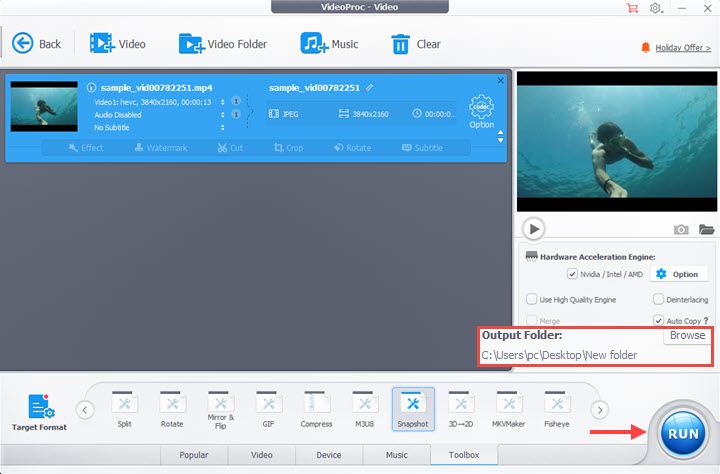
 Pro Tips: The output images might not look clear if your video is in low resolution. Luckily, VideoProc Converter AI also lets you enhance image quality and increase image resolution to 4K/8K/10K in its AI feature - Super Resolution.
Pro Tips: The output images might not look clear if your video is in low resolution. Luckily, VideoProc Converter AI also lets you enhance image quality and increase image resolution to 4K/8K/10K in its AI feature - Super Resolution.
2. Convert Video to Image Sequence in Photoshop
Photoshop is a mini Premiere Pro that lets you edit videos and convert MP4 videos to JPG or PNG images in sequence. But you have to use Photoshop CS6 Extended or any version of Photoshop CC because others do not work with video.
If you have the rigth version of Photoshop, let's see how to turn a video to image sequence in it now.
Step 1. Open Photoshop and drag a video to it.
Step 2. Go to File > Export > Render Video. Choose a folder to save the file in the sub-panel.
Step 3. Click the Adobe Media Encoder option and change it into Photoshop Image Sequence.
Step 4. Complete other settings like image format, image size, and video frame range.
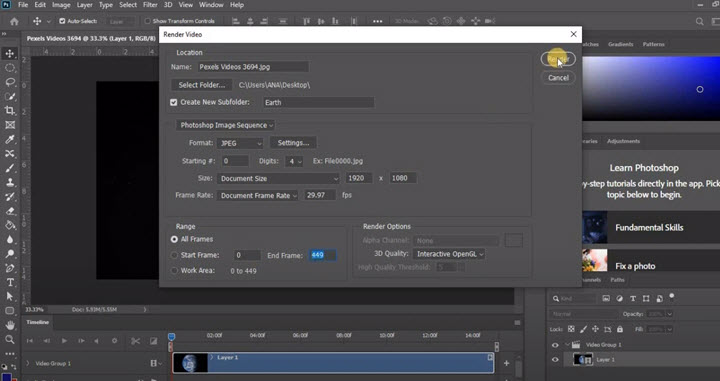
Step 5. Click Render, and wait for it to export the image sequence. Finally, you'll find these pictures in the location you've set.
3. Convert Video to Image Sequence in Blender
If you are already a loyal user of Blender who masters 2D animation, VFX, and 3D modeling, converting a video to a sequence of pictures is just a breeze for you. It offers a bunch of options for image format, color mode, color depth, and color management.
But beginners may feel overwhelmed sometimes. So we do not recomend you convert video to frames with Blender unless you are familiar with its features and settings.
Step 1. Open Blender and change the editor type to Video Sequencer.
Step 2. Click Add to select and load video from your computer to Blender. Then you can see the total number of video frames. Move to the right corner to set the start and end frame in your image sequence.
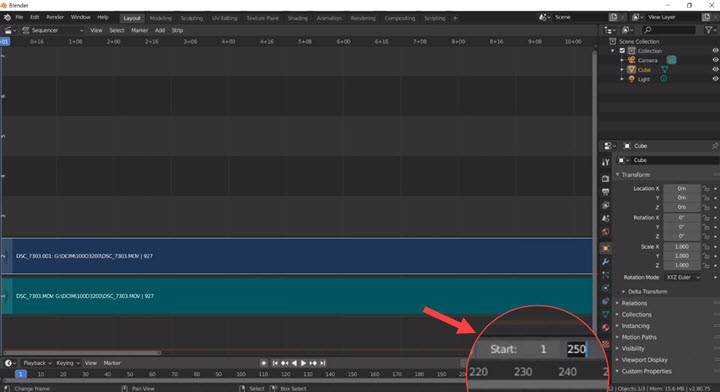
Step 3. Open Image Editor in Blender. Customize image sequence settings in the right area. Match the image dimension to the source video and input the frame rate of the video.
Step 4. Move to the Output settings to choose the location folder, image format, and color depth. If you don't want any quality loss, decrease the compression ratio to zero.
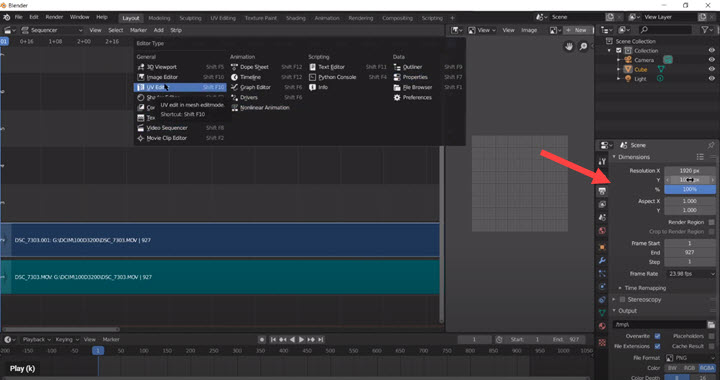
Step 5. Click Render > Render Animation in the top toolbar and you can see images coming into the output folder.
Note: Blender converts video to JPG/PNG images frame by frame, so you might get many images that seem duplicate, esp. in still footage.
4. Convert Video to Image Sequence in VLC
Quite a few users have installed VLC because it works as both a media player and a converter. You can use it to do conversion between videos in a few clicks, but when it comes to turning a video into pictures in sequence, you need to deal with more settings. Here's how.
Step 1. Open VLC media player. But do not rush to import your video to this media player because some settings have to be customized in advance.
Step 2. Navigate to Tools > Preferences and lets it show all settings in the last option at the bottom of the screen.
Step 3. Open Video > Filter > Scene filter.
Step 4. Tweak settings of Image format, Image width, Image height, Directory path, and Recording ratio. Hit Save to apply changes.

Step 5. Get back to the Filter options under Video in the Advanced Preferences panel. Tick the box before the Scene video filter and save it.
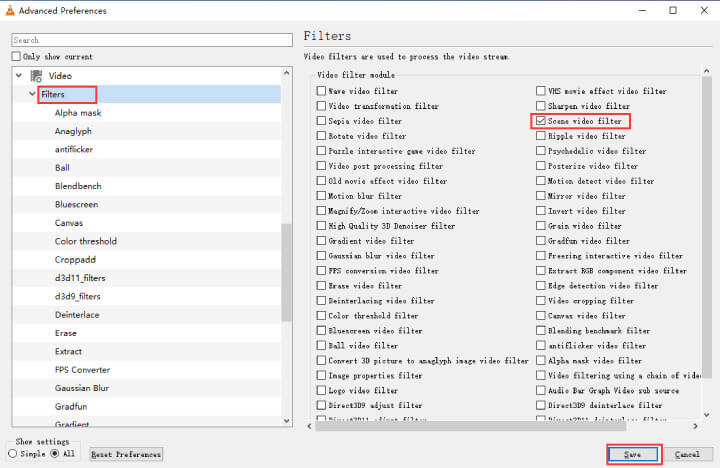
Step 6. Open a video with VLC media player, and it will be recorded in image sequence during the playback. Pause the video and close VLC, and you can find pictures from the video on your computer.
Note: VLC won't reset the settings by default. The next time you watch a video with this media player, it'll convert video to image sequence and save numerous files on your computer automatically. So cancel the scene filter right after capturing pictures from the video.
5. Convert Video to Image Sequence Online
Online video to image converters are worth a try when your video is quite short, because they only convert videos smaller than 100MB. Furthermore, uploading, converting, and downloading cost much more time when your video is larger. Take Online-Convert as an example.
Step 1. Go to online-convert.com and open its Image Converter.
Step 2. Choose an image format, JPG, PNG, TIFF, or others. Then upload your video from your computer, Dropbox, or Google Drive.
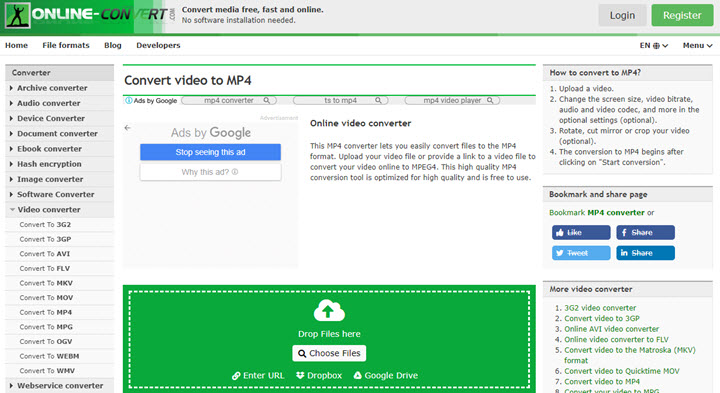
Step 3. You can keep its default settings and start conversion immediately. If you want pictures of better quality, change the Quality settings to Best before the conversion.
Step 4. Wait for it to convert the video into images. Then you'll see a long list of images. Select all and download them as ZIP.
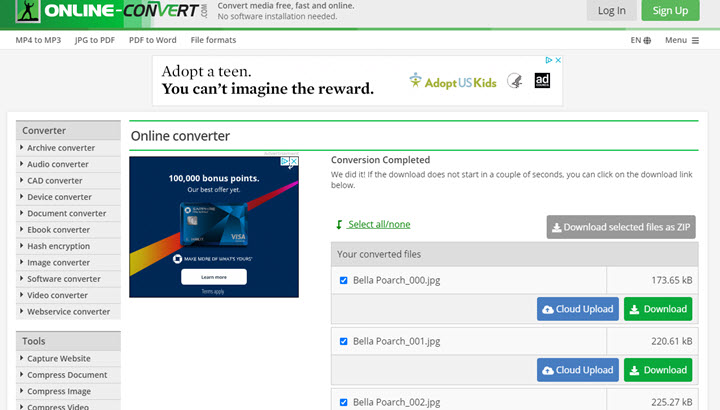
Step 5. Unzip the file, and you'll get a series of frames from the video.
Note: It takes snapshots from the MP4 clip every 2-3 seconds. And you are not allowed to change the settings.
FAQs
How do I convert MP4 to JEPG sequence?
In VideoProc Converter AI, just select JPEG in the Snapshot panel, and input the number of the image count. Then it will export an image sequence in JPEG format in a folder.
How do I save a video as a PNG sequence?
After loading a video to VideoProc Converter AI, open its Snapshot tool in Toolbox, then choose PNG in the format option.
How to export an image sequence in iMovie?
Click the Share icon in iMovie and select Export Image Sequence. Then, choose an output format for the sequence, and click Next to export.









